#São Jorge Castle
Text
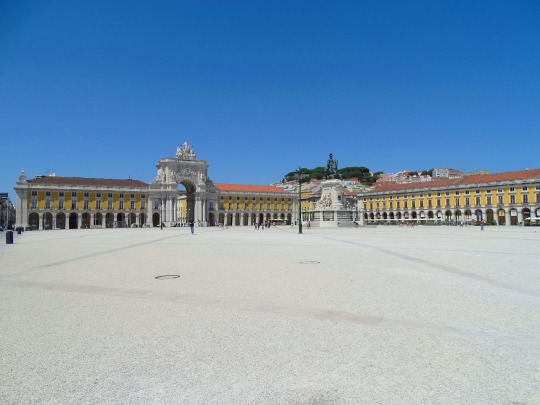







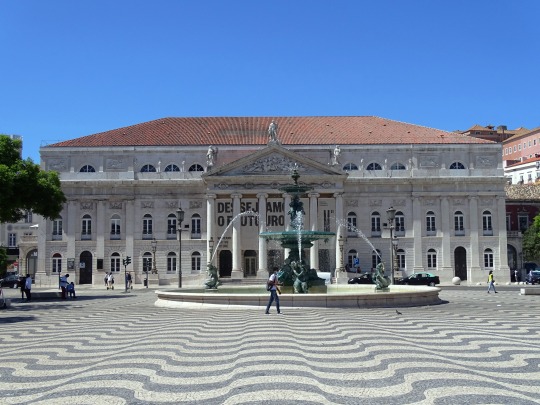
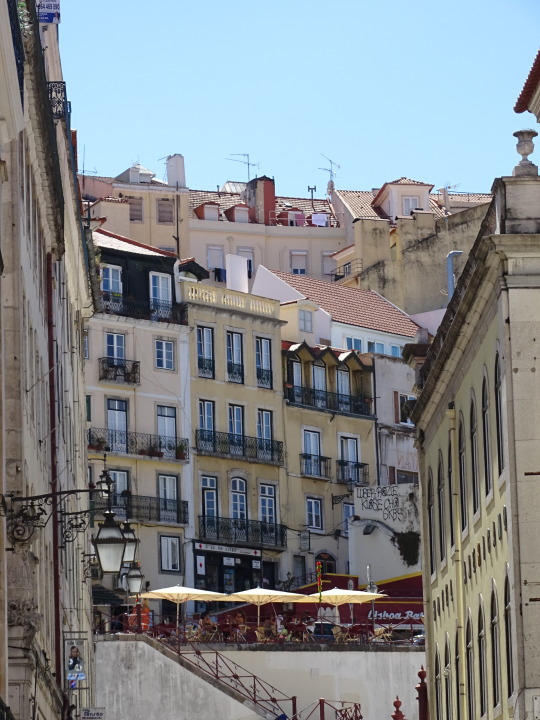
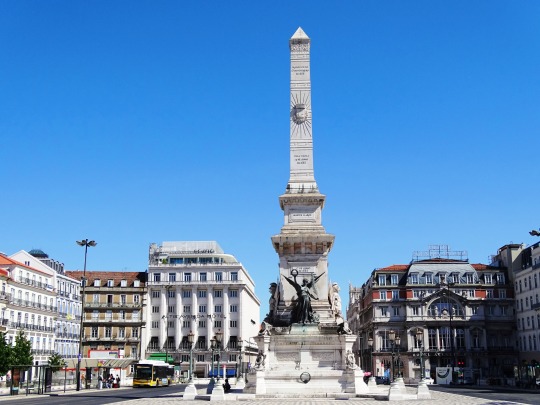
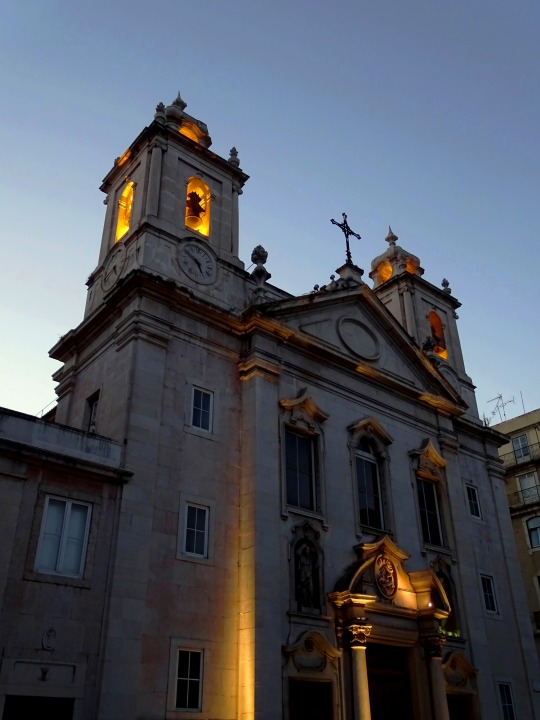

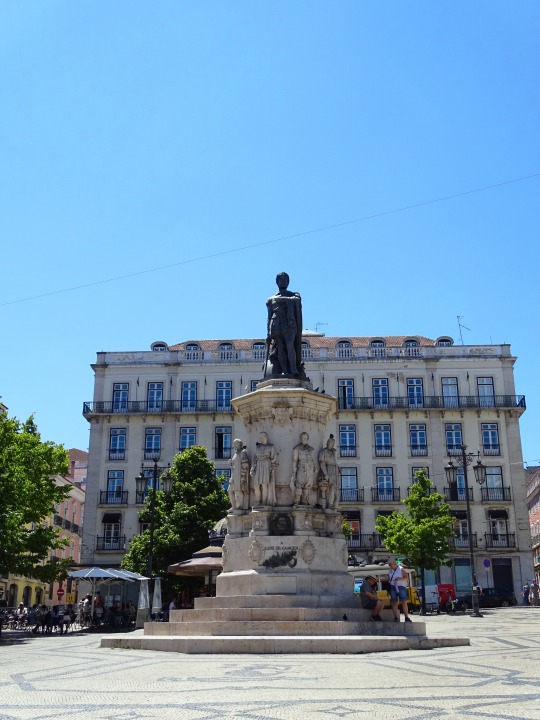

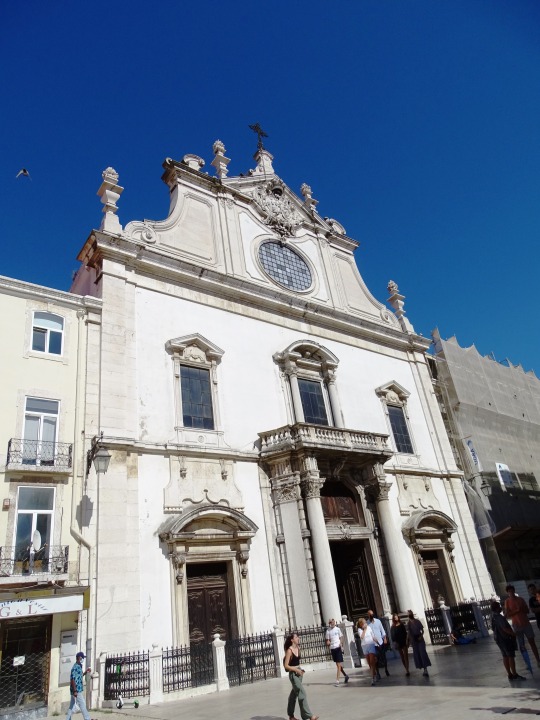


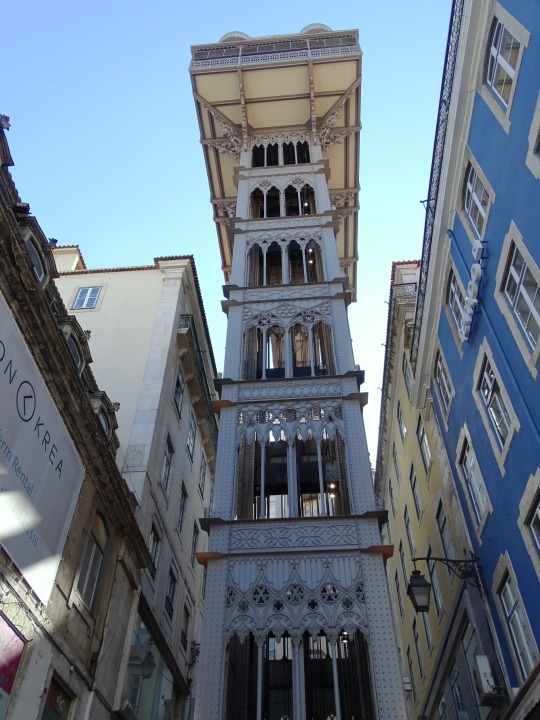
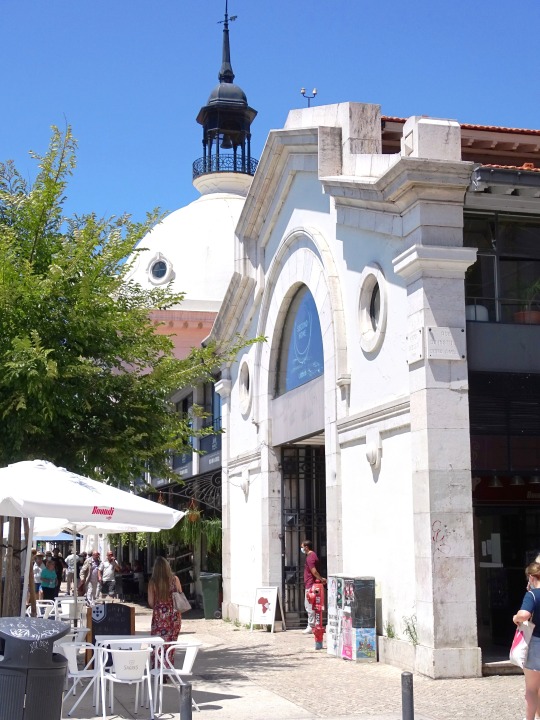



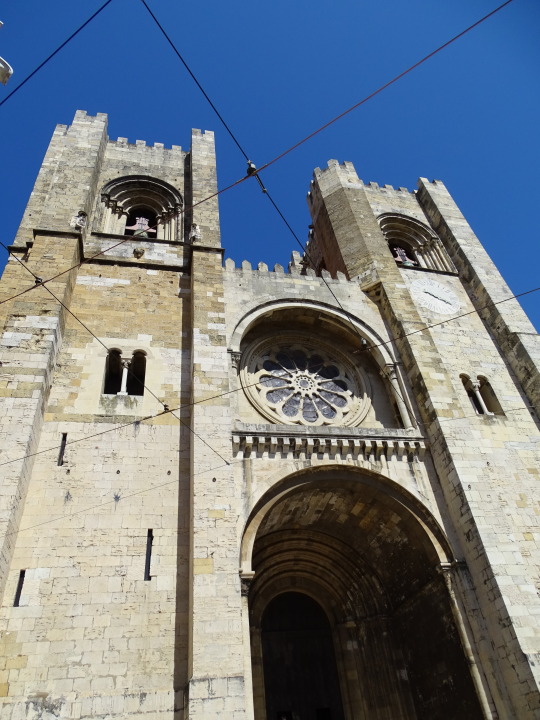
Reconquista: After a siege of four months, crusader knights reconquered Lisbon on October 25, 1147.
#Reconquista#crusader knights#reconquered#Lisbon#25 October 1147#Lisboa#Portugal#summer 2021#original photography#architecture#cityscape#Tagus River#Praça do Comércio#Praça do Município#São Jorge Castle#Belém Tower#Lisbon Cathedral#landmark#tourist attraction#anniversary#history#Southern Europe#travel#vacation
10 notes
·
View notes
Text
Traveling Europe: 7 Destinations in 4 Months
Traveling Europe: 7 Destinations in 4 Months
Since March of 2019, the thought of traveling was nothing more than a dream. Borders closed, vacations were canceled, and the world shut down due to COVID-19. If you told me I would be traveling around Europe in less than two years, I would not have believed it. Yet, 2021 came around and I was accepted to a study abroad program in London for the first semester of my junior year. As the world was…
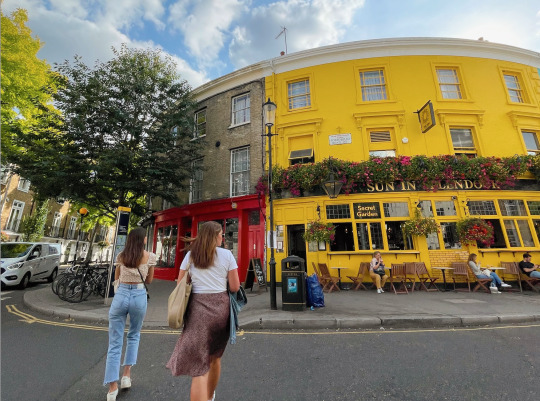
View On WordPress
#Borough Market#Buckingham Palace#Café de Flore#Castle of São Jorge#Changing of the Guard#Copenhagen’s Botanical Garden#Elizabeth Bernstein#Harrods#Mini Bar - José Avillez#Night Sledding#Nyhavn#Opium Barcelona#Paris Christmas Market#Park Güell#Queen Mary University#saint emilion#The Victoria and Albert Museum#Top of Europe#Torvehallerne Market#Traveling Europe#Wine Tour
0 notes
Text



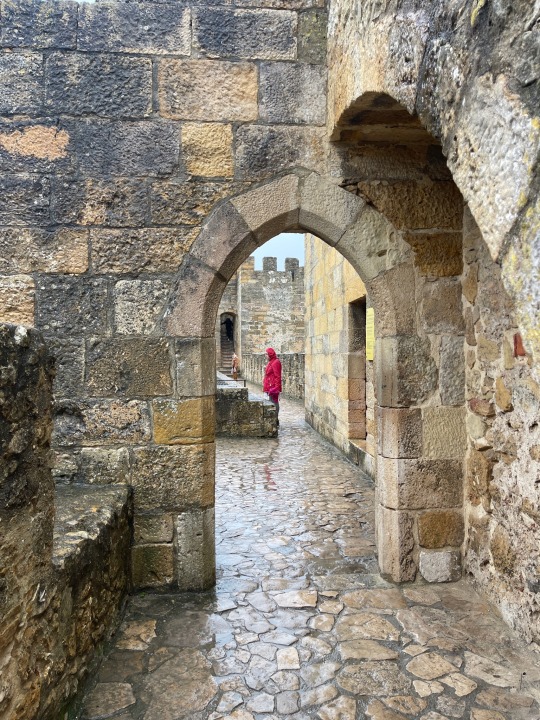


.
One last sight as we climbed all the way to the top of Lisbon highest hill to check out Castelo de São Jorge.
Human occupation of the castle hill dates to at least the 8th century BC while the oldest fortifications on the site date from the 2nd century BC. The hill on which Saint George's Castle stands has played an important part in the history of Lisbon, having served as the location of fortifications occupied successively by Phoenicians, Carthaginians, Romans, and Moors, before its conquest by the Portuguese in the 1147 Siege of Lisbon. Since the 12th century, the castle has variously served as a royal palace, a military barracks, home of the Torre do Tombo National Archive, and now as a national monument and museum.
4 notes
·
View notes
Text

Archway - São Jorge Castle, Lisbon Portugal
©2022 by John A. Royston - Nosealviewing™
All rights reserved
20 notes
·
View notes
Text
Exploring Alfama

Alfama, one of Lisbon's oldest neighborhoods, dates back to the Iron Age. This area sits on a hill overlooking the Tagus River and walking its steep, narrow streets left almost as much of an impression on me as the beautiful view.
Miradouro de Santa Luzia is a popular spot to take in the view. Food and drinks are sold nearby but the music is always free.
A short walk from there is Castelo de São Jorge. The original castle was destroyed years ago in a massive earthquake so what stands is actually a restoration of the Moorish construction

Peacocks were first brought to Portugal as trophies in the 15th century and flocks of them still inhabit the castle.
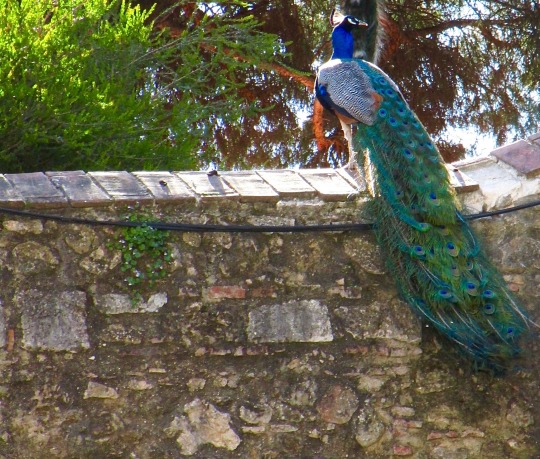
#travel photos#travel photography#mobile photography#selfie#me#black man#black men#melanin#composition#travel video#exploring#explore#european travel#alfama#lisbon#portugal#lisbon portugal#my photos#captures#my captures#my work#peacock#peacocks#beauty#beautiful#view#views#pretty views#beautiful views#travel vid
8 notes
·
View notes
Text
Unveiling Lisbon: A Decalogue of Enriching Experiences
Nestled along the picturesque shores of the Tagus River, Lisbon, Portugal, stands as a beacon of cultural richness and historical allure. For the discerning traveler seeking more than mere sightseeing, this European gem offers a plethora of distinctive activities. Here are 10 refined pursuits to elevate your sojourn in Lisbon.

A Fado Soirée at Tasca do Chico
Immerse yourself in the melancholic cadence of Fado, Portugal's soulful musical genre, at Tasca do Chico. This intimate venue, hidden in the heart of Bairro Alto, encapsulates the quintessence of Lisbon's musical heritage. Let the evocative tunes and intimate ambiance transport you to the heart of Portuguese emotion.
Wander the Alfama District's Mosaic of Streets
Embark on an odyssey through Alfama, Lisbon's oldest district, where time seems to stand still amidst labyrinthine alleys and vibrant street art. Explore the São Jorge Castle, an ancient Moorish citadel, and savor panoramic vistas of the city's undulating landscape, a fusion of history and modernity.
Indulge in Pastéis de Nata at Pastelaria de Belém
Delight your palate with Portugal's iconic custard tart, the Pastel de Nata, at Pastelaria de Belém. Revered for its secret recipe dating back centuries, this patisserie in Belém crafts these golden-hued delicacies with a perfection that borders on alchemy. Prepare for a gustatory revelation.
Ascend the Elevador de Santa Justa
Ascend to the skies aboard the Elevador de Santa Justa, an iron marvel intertwining history and innovation. From the summit, witness Lisbon's undulating terrain unfold beneath you, juxtaposing the medieval Alfama with the modernity of Baixa—a visual symphony that echoes through time.
Traverse the LX Factory's Cultural Kaleidoscope
In the revitalized LX Factory, a former industrial complex turned cultural hub, uncover a mosaic of creativity. From artisanal boutiques to avant-garde galleries, this eclectic enclave pulsates with the vibrancy of Lisbon's contemporary art scene—a testament to the city's harmonious blend of tradition and innovation.
Engage Your Senses at Mercado da Ribeira
Embark on a culinary odyssey at Mercado da Ribeira, where gastronomic delights converge under one roof. From fresh seafood to artisanal cheeses, this market in the heart of Cais do Sodré encapsulates Lisbon's culinary diversity. Savor the flavors and aromas that define Portuguese gastronomy.
Traverse the Belem Tower's Maritime Legacy
Marvel at the Belem Tower, an architectural gem that once guarded Lisbon's harbor. This fortress, with its intricate Manueline design, narrates tales of maritime exploration and Portugal's Age of Discovery. Traverse its chambers and ramparts, each echoing with the whispers of bygone seafaring adventures.
Bask in the Sunlight at Praia do Guincho
Escape the urban rhythm and embrace the Atlantic breeze at Praia do Guincho. This pristine beach, embraced by rugged cliffs, offers a tranquil retreat just a short drive from Lisbon. Whether a leisurely stroll or a windswept meditation, let the vastness of the ocean inspire a moment of introspection.
Discover the Calouste Gulbenkian Museum's Artistic Pantheon
Immerse yourself in artistry at the Calouste Gulbenkian Museum, a bastion of cultural treasures. From ancient artifacts to modern masterpieces, this institution unfolds a visual narrative spanning millennia. Wander through its galleries and corridors, where each exhibit beckons with a story waiting to be unraveled.
Navigate the City's Hills with Tram 28
Embark on a nostalgic journey through Lisbon's undulating terrain aboard Tram 28. This iconic yellow tram traverses the city's hills, offering a kaleidoscopic view of its architectural splendors. As you rattle through the cobbled streets, absorb the essence of Lisbon's past and present converging in a rhythmic dance.
Lisbon beckons not merely as a destination but as an immersive tapestry of experiences with this best things to do in Lisbon Portugal. Beyond the conventional tourist trail, these ten refined pursuits promise to unveil the essence of a city where history, culture, and modernity harmonize in an exquisite symphony. Indulge your senses, traverse the labyrinthine alleys, and let Lisbon's enchantment unfold in every step, an odyssey of unparalleled richness awaits the discerning traveler.
3 notes
·
View notes
Text
O castelo dos mouros
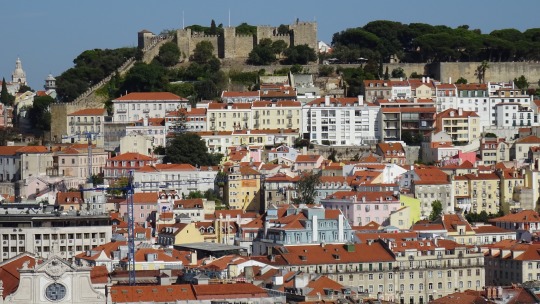
The Castelo de São Jorge is located on the hill of Lisbon that bears the same name. It was an excellent bulwark for the successive civilizations that settled in what is now the capital of Portugal. From the 6th century BC, Phoenicians, Greeks and Carthaginians left their mark, until the Romans settled and christened it Olissipo.
In the context of the struggles between the Romans and the inhabitants of the region, the Lusitanians, in which the leader Viriato was killed and a large number of his followers were immolated in the distant Numantia, the consul Decimus Junius Brutus used the city as a base for his legions to dominate the west of the Iberian Peninsula, then generically called Hispania.
Once the whole of Lusitania was subdued, the city acquired the name of Felicitas Julia around 60 BC and entered a period of prosperity that lasted until the 5th century, when the first barbarian invasions of the Peninsula wreaked havoc everywhere.
Lisbon was first conquered by the Suevi, who were then displaced by the Visigoths, who created a kingdom that extended from the south of the Peninsula to the north of the Pyrenees, initially leaving the Suevi a stronghold in the northwest of the now disappeared Roman Hispania, which momentarily reached as far as Lisbon.
When the Franks spread through present-day France, they made the Visigoths move further south, who managed to expel from the Peninsula the Byzantines, successors of the Romans in the West to many regions of the Mediterranean, and to assimilate the kingdom of the Suevi in the 6th century. Of the control of Lisbon by the Visigoths, not many traces remain.
At the beginning of the 8th century another conquest came to the Lisbon region, this time from the south, on the other side of the Pillars of Hercules, today's Strait of Gibraltar. The Arabs had embarked on a campaign of conquest just over a century earlier and had spread across the Near East and North Africa from Mesopotamia to the Atlantic.
In 716, Al-Ushbuna, the new name of Lisbon, appeared in history and the nickname given to the castle of São Jorge, Castelo dos Mouros, a common name throughout the Peninsula to refer to invaders from the ancient Roman province of Mauritania, made sense.
At the end of the 8th century, the Christian kings who had taken refuge in the mountains by the Cantabrian Sea were already carrying out raids as far as Lisbon, such as that of 796 by Alfonso II of Asturias. To these were added those of a people that would shake the coasts of Europe at the end of the first millennium after Christ, the Vikings or Normans, who arrived in 844 and 966.
At this time, the castle was a citadel, a castle of Andalusian characteristics and was already walled with numerous towers and thick walls. In 1147 it fell into the hands of the Portuguese King Alfonso I, although it suffered Andalusian sieges in 1179 and 1183, which it successfully resisted.
In 1255, when Lisbon became the capital of Portugal, the Royal Palace was installed within its enclosure, which was damaged by successive earthquakes in the thirteenth and fourteenth centuries. Nevertheless, it was a bastion against the Castilian attacks at the end of the 14th century.
Later, in the 16th and 17th centuries it again suffered further earthquakes, which dictated its decline, when the kings of the restoration that put an end to the Spanish occupation ended up abandoning it to settle in palaces closer to the banks of the Tagus River (Tejo in Portuguese).
The earthquake of 1755, which destroyed Lisbon, sentenced it, starting a degradation that lasted until the mid-twentieth century, when it began a restoration that lasted half a century.
2 notes
·
View notes
Text

One of our favorite viewpoints in Lisbon, looking at the São Jorge Castle, downtown and the 25 of Abril Bridge! Join us ride351.com
0 notes
Text
[ad_1]
Cosy bars, majestic castles and timeless architecture make Lisbon a cool and entrancing city. Our 3-day Lisbon itinerary puts it all together, so you have time to savour it all.
By: Paul Healy |
Published: 16 Apr 2024
span box-shadow: none !important; filter: brightness(1) !important; ]]>
Lisbon is cool.
As a city unrestrained by convention, Lisbon is bursting with personality. Beside majestic architecture housing Portugal’s famous blue tiles, flea markets hum to the murmur of curious browsers.
Re-purposed industrial areas give it an edge for artistic expression, while timeless monasteries captivate with beguiling designs.
Windy lanes climbing up and down narrow streets hide tiny bars serving simple tapas and local wines. Live music spills from open windows; the wistful warbling of fado fills squares with an inexplicable yearning.
We’ve visited Lisbon several times, and this itinerary captures everything we love about this alluring city. From the best local areas to the top tourist spots; exquisite galleries to the coolest street art; glorious castles to quirky shops.
And of course, pastel de nata.
IN THIS GUIDE
3-DAY LISBON ITINERARY
DAY 1
São Jorge Castle, São Vicente de Fora, Graca’s Campo de Santa Clara, National Palace, Cathedral
DAY 2
Antiga Confeitara de Belém, Jerónimo’s Monastery, Museu Coleção Berardo, Padrão dos Descobrimentos, LX Factory, Santa Catarina
DAY 3
Tram 28, Praça Luis de Camōes, Praça de Principe Real, Miradouro de São Pedro de Alcãntara, Elevador da Gloria, Igreja de São Domingos, Convento do Carmo
LISBON MAP | ABOUT THIS ITINERARY
We’ve put this itinerary together after several visits to Lisbon. It has been designed to minimise the travel time between sights and you can follow most of this itinerary on foot. The map below is organised by each of the 3 days.
>>
DAY 1 – ALFAMA & OLD LISBON
Alfama, perched up on the hill, is a maze of alleyways winding between grand historic buildings. There are sweeping views over the city and the sea, similar to some of the vistas in Porto.
We always have a great time simply ambling around the area but here is a recommended route.
SÃO JORGE CASTLE
Start your 3 days in Lisbon at São Jorge Castle, high on the hill in Alfama. It was once a Moorish castle, but little remains from that period and most of it has been rebuilt over the years.
The small museum could do with some improvements, but the views over the city from the rambling walls are excellent.
Castelo de São Jorge / Skip-the-Line Tickets
SÃO JORGE CASTLE
CHURCH OF SÃO VICENTE DE FORA
Grab a quality coffee at Copenhagen Coffee Lab and Bakery, before entering the Church of São Vicente de Fora.
The church itself is decent and worth a look, but the monastery and cloisters next door are incredibly impressive. Blue tiles, protected by vaulted ceilings, shimmer on the white walls.
The atmospheric side chapels have tombs adorned with skulls with a cloaked statue standing guard.
Igreja de Sao Vicente de Fora / Check current opening times.
SÃO VICENTE DE FORA
GRACA’S CAMPO DE SANTA CLARA
After the church, head over to Graca’s Campo de Santa Clara, where a massive flea market, Feira da Ladra, covers the streets (Tuesday and Saturday).
It sells everything you will never need: old rotary phones, broken mannequins and pre-loved vinyl. The market is great for people watching and you may even pick up a bargain.
LUNCH
There are plenty of atmospheric places to grab lunch near the market, we loved Tabernita for the traditional Portuguese dishes.
FEIRA DA LADRA
NATIONAL PANTHEON
In the afternoon, enter the striking Panteão Nacional. Originally built as a church it now houses monuments to the great and the good of Portuguese history including a shrine to Vasco da Gama who brought massive wealth to Lisbon.
The entrance ticket allows access to the roof with excellent views of the city. From the upper terraces take in a birdseye view of the
marble hall.
NATIONAL PANTHEON
LISBON CATHEDRAL
Next, stroll the tightly packed twisty streets of Alfama.
Head past the cute stores and tiny bars to Miradouro das Portas do Sol observation deck for more views. Drop down the hill to the castellated fortress that is Lisbon Cathedral.
The Romanesque Lisbon Cathedral dates back to the 12th century. With an imposing facade and two bell towers on either side, it rises like a medieval fortress from the old town.
The view from the loft was the highlight for us.
LISBON CATHEDRAL
PRAÇA DO COMÉRCIO
Finally, leave Alfama and stroll down towards Praça do Comércio. The harbour-facing plaza is one of the largest in Portugal and the most beautiful in Europe. It was completely remodelled after the earthquake and today it’s the seat of the Portuguese state departments.
The large ornate square an excellent photo opportunity, but we’d suggest avoiding the restaurants around the square.
PRAÇA DO COMÉRCIO
FADO + EVENING
In the evening head to Bairro Alto.
Grab a drink on the steps at Meson Andaluz. Then, choose from the daily changing menu of local dishes at the tiny but charming Taberna da Rua das Flores.
Later in the evening, Tasca Do Chico offers an intimate great value fado experience. One block north, cool jazz drifts out of Páginas Tanta.
At Portas Largas a mixed young crowd can be found enjoying live pop music. If you can’t decide, just go to all three. There’s no entrance charge and the drinks are cheap.
DAY 2 – BELÉM & WEST LISBON
The seafront area of Belém lies to the west of Lisbon city centre. Come here for engrossing architecture, the epicentre of modern art in the city, and the best pastel de nata in Lisbon.
ANTIGA CONFEITARA DE BELÉM
Take tram 15 to Belém and begin the second day of your 3-day Lisbon itinerary with coffee and pastel de nata (Portuguese custard tart) from Antiga Confeitara de Belém. Yes it has become a large tourist institution, but the pastel de nata is still the best in town.
JERÓNIMO’S CHURCH AND MONASTERY
After breakfast head to Jerónimo’s Church and Monastery.
The remarkable vaulted ceiling of the church is held aloft by intricately carved stone pillars, illuminated by beams of light cascading through colourful stained glass windows.
The tomb of Vasco de Gama – the first person to sail around the Cape of Good Hope and therefore enable Portugal to build an empire – takes pride of place.
The church is free but we recommend paying to go into the monastery. The cloisters are magnificent and the view of the church from the upper choir is not to be missed.
JERÓNIMO’S CHURCH AND MONASTERY
MUSEU COLEÇÃO BERARDO
End the morning at Museu Coleção Berardo, Lisbon’s best modern art offering. The permanent collection is well-labelled and offers a history lesson in the development of modern art.
The temporary exhibitions have an excellent reputation, it was one of our favourite experiences in Lisbon on our last visit.
MUSEU COLEÇÃO BERARDO
BELÉM TOWER & PADRÃO DOS DESCOBRIMENTOS
Cross the street and peer up at the tower of Belém.
The climb up to the top is not really worth the wait, so we’d suggest skipping in and strolling along the seafront to find a spot for lunch.
After recharging, pass by Padrão dos Descobrimentos, the photogenic monument to Portugal’s navigational prowess.
PADRÃO DOS DESCOBRIMENTOS
BELÉM TOWER
LX FACTORY
Head toward the city on tram 15, but before you get there, jump off at LX Factory, an old textile factory that has been converted into a modern and creative space under the railway line.
There’s some excellent street art on old factory walls, indie shops, a very cool bookstore and some of the best coffee in town. It’s a great place to hang out and relax.
SANTA CATARINA
Hopping back on tram 15, spend the evening in the quaint neighbourhood of Santa Catarina which sits on top of a hill. A drink at Noobai Café offers views over the water. To get here it’s a steep walk up the hill or you could take the fun way and ride up on Eleva
dor da Bica.
LX FACTORY
DAY 3 – BAIRRO ALTO, BAIXA & CHIADO
The central area of Lisbon is an eclectic mix. Narrow alleyways crisscross grand shopping streets, dilapidated ruins sit next to striking hotels, and music wafts through open doors and windows. It’s a great part of the city.
TRAM 28
On the last day of this 3-day Lisbon itinerary, get an early start (to avoid the queues) and head to Praça Martim Moniz to board Tram 28. This tram twists and turns up the hilliest, narrowest and most scenic lanes in Lisbon. It loops around Alfama, across the centre of town and back up into Chiado.
PRAÇA DE PRINCIPE REAL
Jump off the tram in Chiadom explore the shops around Praça Luis de Camōes and then head north into the tightly packed narrow lanes of Bairro Alto.
Check out the various new concept stores around Praça de Principe Real before lunch at A Cevicheria. Sit at the counter under a giant octopus, and admire the chef preparing mouth-watering fish dishes.
MIRADOURO DE SÃO PEDRO DE ALCÃNTARA
After lunch check out the view at Miradouro de São Pedro de Alcãntara, which we think gives you the best view in the city. Then make your way down to Rossio and Baixa.
You can either take the Elevador da Gloria tram or walk down the path alongside the tram tracks to inspect some of the coolest street art in Lisbon.
IGREJA DE SÃO DOMINGOS
You now find yourself in Rossio and Baixa – newer Lisbon neighbourhoods, built after the earthquake of 1755.
Explore the squares and statues making sure you call in at Igreja de São Domingos. This atmospheric church suffered damage during the earthquake and was burnt down in 1959. The roof was destroyed and has been rebuilt but the walls bear the scars of both events.
IGREJA DE SÃO DOMINGOS
CONVENTO DO CARMO
Skip the long queues and only average views of Elevador de Santa Justa and take the free supermarket lift to Rua Garrett. It’s less glamorous, but just as effective.
Stroll the shops before visiting Convento do Carmo. The convent was damaged in the earthquake, and now only towering arches reach into the sky.
The chapel at the back contains a strange mix of fascinating artefacts: tombs of the famous, a 2nd-century Egyptian sarcophagus and most interestingly, two mummies of Peruvian children.
BAIRRO ALTO
For the final evening, grab dinner at Artis Bar in Bairro Alto. It has a great local wine bar atmosphere and tasty dishes at decent prices. It’s also perfectly positioned for people spilling into the streets as music wafts in the air.
CONVENTO DO CARMO
WHERE TO STAY IN LISBON
Lisbon is a relatively compact city, but it’s still a good idea to stay as centrally as possible. We recommend staying in Baixa/Chiado, Bairro Alto or Alfama.
All these neighbourhoods ooze the charm that makes Lisbon the city that it is. They’re all centrally located allowing you to get an early start in the morning, and a late night in the evening.
BUDGET
CASA C’ALMA
Casa C’Alma is a beautifully decorated B&B with a small, friendly vibe and a big continental breakfast. It’s located in a lovely neighbourhood about 1 mile from the city centre with plenty of restaurant options nearby.
BOOKING.COM
MID-MARKET
CASA BALTHAZAR
The modern, self-catering apartments of Casa Balthazar are bang in the centre of town, yet exude a relaxed chilled-out calm. The views are superb but upgrade to the Jacuzzi Terrace room for spacious luxury with landmark views.
HOTELS.COM / BOOKING.COM
UPMARKET
MEMMO ALFAMA
For an emphasis on design with all the latest gadgets, it’s hard to go past Memmo Alfama for your Lisbon stay. Although surrounded by some of the best attractions in Lisbon, it will be hard to leave the rooftop bar and pool with sweeping views over the Tagus River.
HOTELS.COM / BOOKING.COM
HOW TO GET AROUND LISBON
Lisbon has a comprehensive public transport network including trams, funiculars, buses and a metro.
A Navegante Card is a quick and easy way to pay for all your travel. The ca
rd costs €0.50 and can be charged with individual tickets, a day pass (€6.40 / £5.95 / $7.90), or with a balance of up to €40 to use as pay-as-you go.
Cards can be purchased and charged at metro stations or small stores displaying the Navagante sign.
However, the best way to get around the city is to walk. This Lisbon itinerary puts all the sights and experiences in the right order, so you don’t have to spend too much time between places.
BEST TIME TO GO TO LISBON
The best time to visit Lisbon is during the shoulder seasons of March to May and September to October. Over this period, the temperatures are generally comfortable and there are fewer visitors.
You might also snap up a bargain with accommodation places slightly cheaper over this period.
As with most European destinations, summer is the peak season when both the temperature and visitor numbers are high. In winter it can be wet and windy, although in Lisbon it’s rarely uncomfortably cold.
WHAT TO BOOK BEFORE A TRIP TO LISBON
Most attractions in Lisbon don’t require pre-booking and we wouldn’t recommend getting too much in advance so you can leave your itinerary flexible.
If you’re visiting during peak times, you may want to book ahead to beat the queue especially São Jorge Castle and Saint Jerónimos Monastery.
SAVING
LISBON CARD
With access to 23 museums and free tram passes, the Lisbon Card is a very cost-effective way to see the main sights in the city. Cards can be purchased for 24, 28 or 72 hours.
HOW MUCH TIME IN LISBON?
Most of the main sights in Lisbon could be seen in 2 days. It’s a relatively compact city with good local transport so getting between all the main attractions is efficient.
We have provided a 3-day Lisbon itinerary because this allows you to see all the impressive historical sights and enjoy some local experiences. It also leaves a little time to wander the streets and soak up the atmosphere.
Lisbon is one of our favourite cities in Europe. It’s charming and easy; beautiful and interesting. Yet the nightlife is pumping, the wine free-flowing and the locals friendly. So, you could easily spend up to 4 or 5 days visiting Lisbon, especially if you added a day trip to Sintra, which you could either do on your own or join a tour.
TIPS FOR VISITING LISBON
Firstly, read our guide to the best things to do in Lisbon which covers all our top highlights in more detail.
TRAM 28 TIPS
Getting on board Tram 28 at Praça Martim Moniz can be painful as queues are often long. Get their early or walk to the next stop at Rue Palme and hop on there. Tram 28 is a wonderful Lisbon experience but a pick-pocketers delight, so keep an eye on your stuff.
STREET SELLING
The whispers of “Hashish? Cocaine?” on the streets of Santa Maria Maior is part of a well-known fake drug annoyance embraced by Lisbon. Simply say “no thanks” and move on, in most cases, you’re just rejecting flour or crushed up bay leaves.
AUTHENTIC FADO
Fado is a moving experience in Lisbon, but the best never gets advertised or promoted to tourists. If you hear it wafting from a packed bar, but there are no signs, this is the place to check out.
TOURIST RESTAURANTS
Lisbon has grasped the concept of the tourist restaurant. If you want a local dining experience, gravitate towards places without English menus, and avoid places with people hassling you out the front.
MIRADOUROS
Always take the opportunity to collect the views at a miradouro; they’re a great place to hang out and Lisbon’s array of roof tiles is stunning. Some of the best are:
Miradouro das Portas do Sol
Miradouro da Graça
Miradouro de Santa Catarina
Miradouro de Senhora do Monte
Miradouro de Monte Agudo
MORE PORTUGAL READING
ANYWHERE WE ROAM ISREADER-SUPPORTED
When you buy through links on our site, we may earn a small affiliate commission at no extra cost to you.
You can also shout us a coffee.
Thanks for your support – Paul & Mark.
INSTAGRAM | FACEBOOK
[ad
_2]
Source link
0 notes
Text
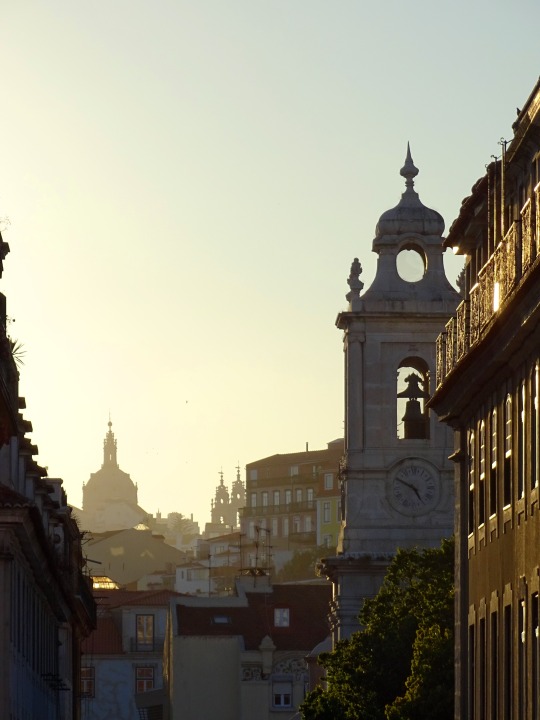
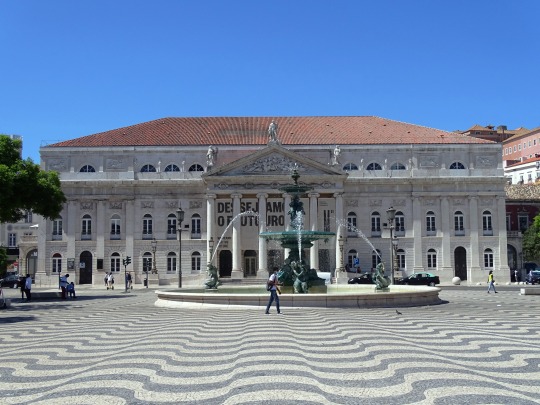
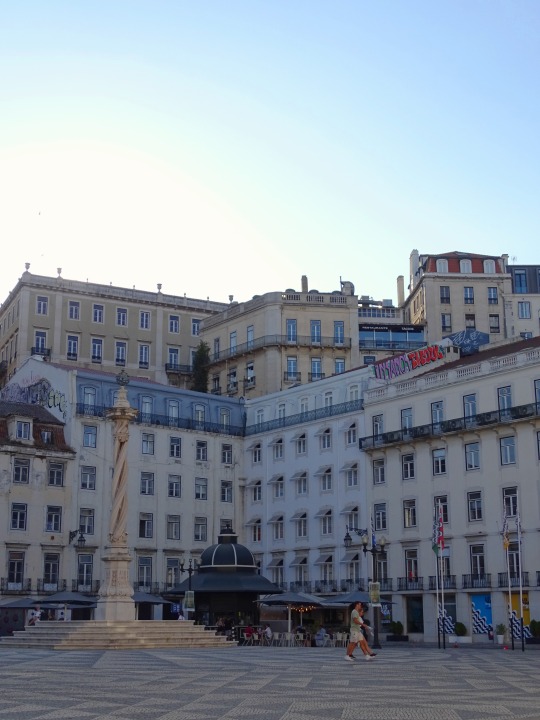
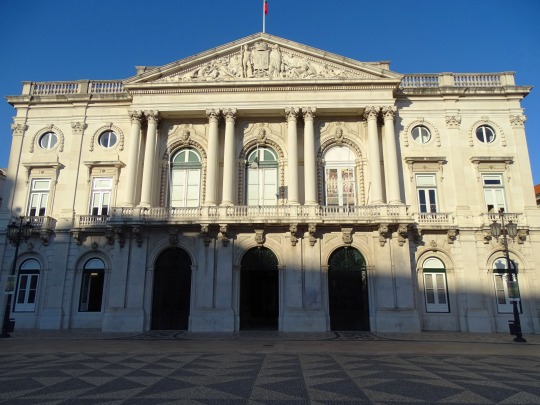



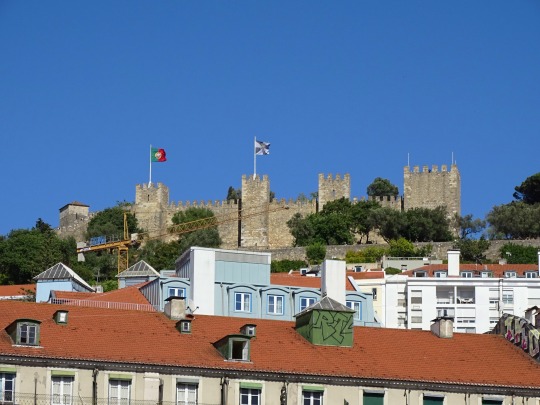

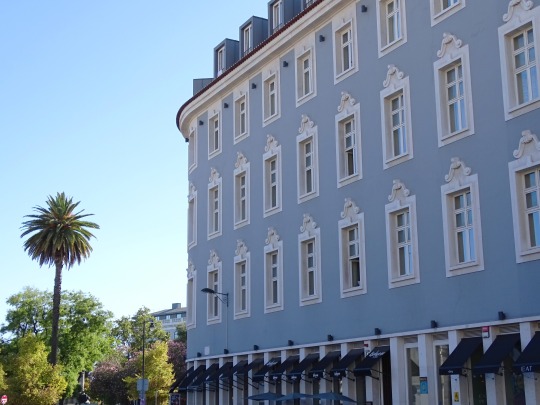

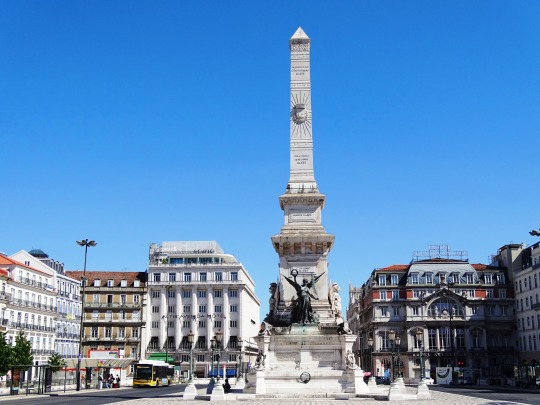




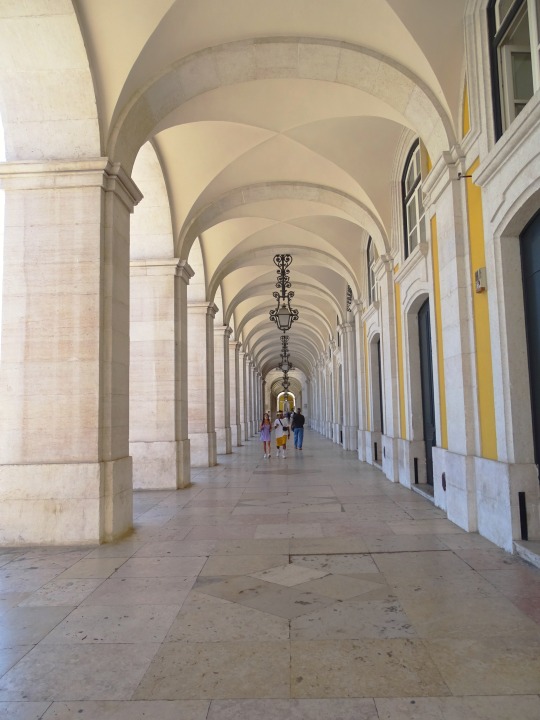

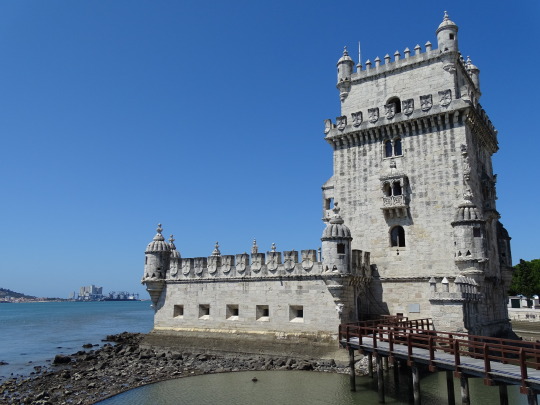
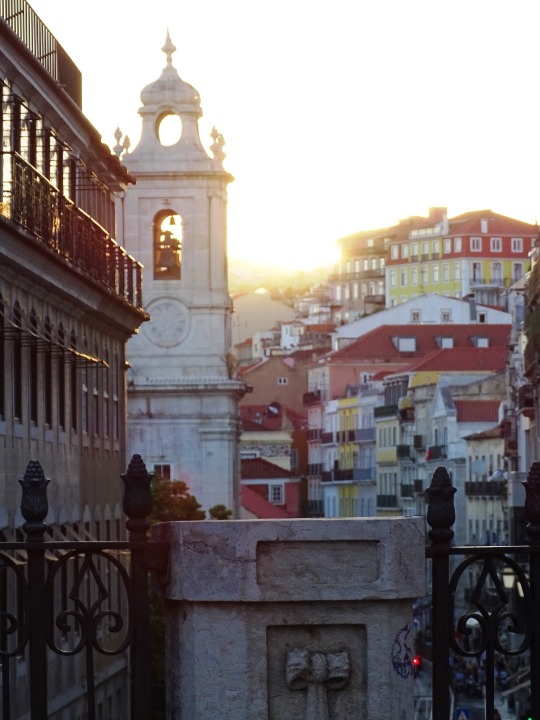
Jean-Andoche Junot's French army entered Lisbon on the November 30, 1807, whereupon the Portuguese royal family departed for Brazil where they would remain until 1821.
#Praça do Comércio#Jean-Andoche Junot#entered#Lisbon#Lisboa#travel#30 November 1807#anniversary#Portuguese history#Portugal#vacation#original photography#summer 2021#architecture#cityscape#Praça do Município#Rossio Square#Belém Tower#São Jorge Castle#Lisbon Cathedral#tourist attraction#landmark#Southern Europe
8 notes
·
View notes
Text
São Jorge's Castle
Monuments
São Jorge Castle is one of Lisbon's most emblematic monuments, located on the city's highest hill.
The oldest known fortification at the site dates back to the 17th century. II BC, although traces found here date back to the 17th century. VI BC Archeology has also made it possible to discover traces of Phoenicians, Greeks, Carthaginians, Romans and Muslims, proving constant human occupation since ancient times.
The castle itself was founded in the 10th and 11th centuries, when Lisbon was an important Muslim port city. In 1147, the first king of Portugal, D. Afonso Henriques, conquered the castle and the city from the Moors. Between the century. XIII and the century. XVI had its most important period. In the century. XVI, it was in the castle that King D. Manuel I received Vasco da Gama after his sea voyage to India and that the first Portuguese theater play, written by Gil Vicente, was performed, on the occasion of the birth of King D. João III.
Declared a National Monument in 1910, it underwent major restoration work during the 19th century. XX, which gave it its current appearance. It is one of the most important places in the city and a leisure space very popular with the population of the surrounding neighborhoods. It can be said that it has the best view of the city and the Tagus River.
Inside, the museum center stands out, where you can see the history of Lisbon, and the Ulisses Tower. The city's legendary founder gives its name to the castle's ancient Torre do Tombo where a periscope allows you to observe the city in 360º in real time.
instagram
0 notes
Text
Unleash Your Adventure: Rent a Porsche Cayenne GTS or Ford Mustang Cabrio in Lisbon
Exploring Lisbon in Style with MaxCarTravel
When it comes to exploring the vibrant streets of Lisbon, nothing quite compares to the thrill of cruising in a luxury car. Whether you're seeking the rugged elegance of a Porsche Cayenne GTS or the classic allure of a Ford Mustang Cabrio, MaxCarTravel has got you covered. Let's dive into the experience of renting these iconic vehicles and discover the unparalleled freedom they offer.

Renting a Porsche Cayenne GTS in Lisbon: Conquer Every Terrain
For those who crave power, precision, and luxury, the Porsche Cayenne GTS is the ultimate choice. With its sleek design and powerful engine, this SUV offers a driving experience like no other. From navigating the winding roads of Sintra to exploring the coastal beauty of Cascais, the Cayenne GTS ensures a smooth and exhilarating ride every time.
Equipped with cutting-edge technology and luxurious amenities, the Cayenne GTS blends comfort with performance seamlessly. Whether you're embarking on a solo adventure or traveling with family and friends, this vehicle provides ample space and versatility to accommodate your needs. With MaxCarTravel, you can rent a Porsche Cayenne GTS Lisbon and embark on an unforgettable journey through Portugal's stunning landscapes.
Cruising Lisbon with the Ford Mustang Cabrio: Feel the Wind in Your Hair
For those who prefer the thrill of open-air driving, the Ford Mustang Cabrio for Rent is the epitome of classic American muscle. With its iconic design and powerful V8 engine, this convertible exudes style and performance at every turn. Whether you're cruising along the Tagus River or soaking in the panoramic views from São Jorge Castle, the Mustang Cabrio promises an unforgettable driving experience.
With its sleek lines and dynamic performance, the Mustang Cabrio is sure to turn heads as you explore the vibrant streets of Lisbon. Whether you're a seasoned enthusiast or simply craving a taste of adrenaline, renting a Ford Mustang Cabrio from MaxCarTravel allows you to embrace the freedom of the open road in style.
Experience Luxury and Adventure with MaxCarTravel
At MaxCarTravel, we understand the importance of quality and reliability when it comes to renting a car. That's why we offer a wide range of luxury vehicles, including the Porsche Cayenne GTS and Ford Mustang Cabrio, to ensure that your journey exceeds expectations. With our seamless booking process and exceptional customer service, you can trust us to provide the perfect vehicle for your Lisbon adventure.
Whether you're planning a weekend getaway or an extended road trip, MaxCarTravel makes it easy to rent a Porsche Cayenne GTS or Ford Mustang Cabrio in Lisbon. So why wait? Unleash your sense of adventure and experience the thrill of luxury driving with MaxCarTravel today.
Conclusion: Discover the Ultimate Driving Experience with MaxCarTravel
In conclusion, renting a Porsche Cayenne GTS or Ford Mustang Cabrio from MaxCarTravel offers the perfect blend of luxury, performance, and adventure for your Lisbon escapade. With these iconic vehicles at your disposal, you can explore the city's enchanting landmarks and picturesque landscapes with style and confidence. So why settle for an ordinary rental car when you can elevate your experience with MaxCarTravel? Visit our website, maxcartravel.com, to book your dream car and embark on the journey of a lifetime.
For more information on this topic, see our website.
Rent Mclaren 570s Algarve
Rent Porsche 911 Lisbon
0 notes
Text
Lisbon!
At the start of November of last year Alieke and I went to Lisbon for a long weekend. We’d both never been there before and wanted to visit someplace with nicer weather than the Netherlands.
We arrived in Lisbon on a Saturday and flew back on a Tuesday. The first day we spent walking around and visiting Castelo de São Jorge. It was a bit of rainy day, so the views from the castle weren’t as good…

View On WordPress
#61. Visit five countries#63. Visit Portugal#72. Go on a trip with Alieke#involves travelling#lisbon#portugal
0 notes
Text

Hidden Passage - São Jorge Castle - Lisbon, Portugal
©2022 by John A. Royston - Nosealviewing™
All rights reserved
14 notes
·
View notes
Text
Discovering the Charms of DMC Portugal: A Journey through History, Culture, and Natural Beauty
Portugal, with its rich tapestry of history, vibrant culture, and breathtaking natural landscapes, is a treasure trove waiting to be explored. As travelers seek unique and immersive experiences, a journey through DMC Portugal promises an unforgettable adventure filled with charm and diversity.

A Historical Tapestry:
Portugal's history unfolds like a fascinating story, and DMC Portugal offers a curated exploration of its historical landmarks. From the medieval splendor of Lisbon's São Jorge Castle to the enchanting Porto, where ancient port wine cellars line the Douro River, every step reveals a chapter of Portugal's past. Expert guides from DMC Portugal provide insightful narratives, bringing history to life with anecdotes and tales that transport visitors to a bygone era.
Cultural Immersion:
One of the highlights of exploring Portugal with a Destination Management Company (DMC) is the opportunity for deep cultural immersion. DMC Portugal designs itineraries that showcase the country's rich traditions, from the soul-stirring Fado music in Lisbon's Alfama district to the lively festivals that celebrate everything from religious events to wine harvests. Travelers can engage with local artisans, partake in cooking classes to learn the secrets of Portuguese cuisine, and witness traditional crafts being brought to life.
Unveiling Natural Wonders:
Portugal's landscapes are as diverse as they are breathtaking, and DMC Portugal ensures travelers experience the full spectrum of natural wonders. From the golden beaches of the Algarve to the lush vineyards of the Douro Valley, each region holds a unique allure. Nature enthusiasts can explore the rugged beauty of the Azores or revel in the tranquility of the Douro River, all carefully curated by DMC Portugal for an eco-friendly and sustainable travel experience.
Tailored Experiences:
What sets DMC Portugal apart is its commitment to tailoring experiences to the preferences and interests of each traveler. Whether one seeks a leisurely exploration of historic sites, an adventure-packed outdoor escapade, or a culinary journey through Portugal's gastronomic delights, DMC Portugal crafts bespoke itineraries that cater to every taste. This personalized approach ensures that each visitor leaves with memories perfectly aligned with their travel aspirations.
Navigating with Expertise:
Navigating a foreign country can be challenging, but with DMC Portugal, travelers are in capable hands. Local experts guide visitors through the hidden gems, share insider knowledge, and facilitate seamless travel logistics. The DMC's network of connections ensures access to exclusive experiences, private tours, and accommodations that embody Portuguese hospitality.
In conclusion, embarking on a journey with DMC Portugal unveils a world where history, culture, and natural beauty converge. Whether strolling through ancient cobblestone streets, savoring regional delicacies, or taking in the panoramic views of Portugal's landscapes, each moment is a testament to the country's charm. DMC Portugal transforms travel into a personalized and enriching experience, creating memories that linger long after the journey is over.
0 notes